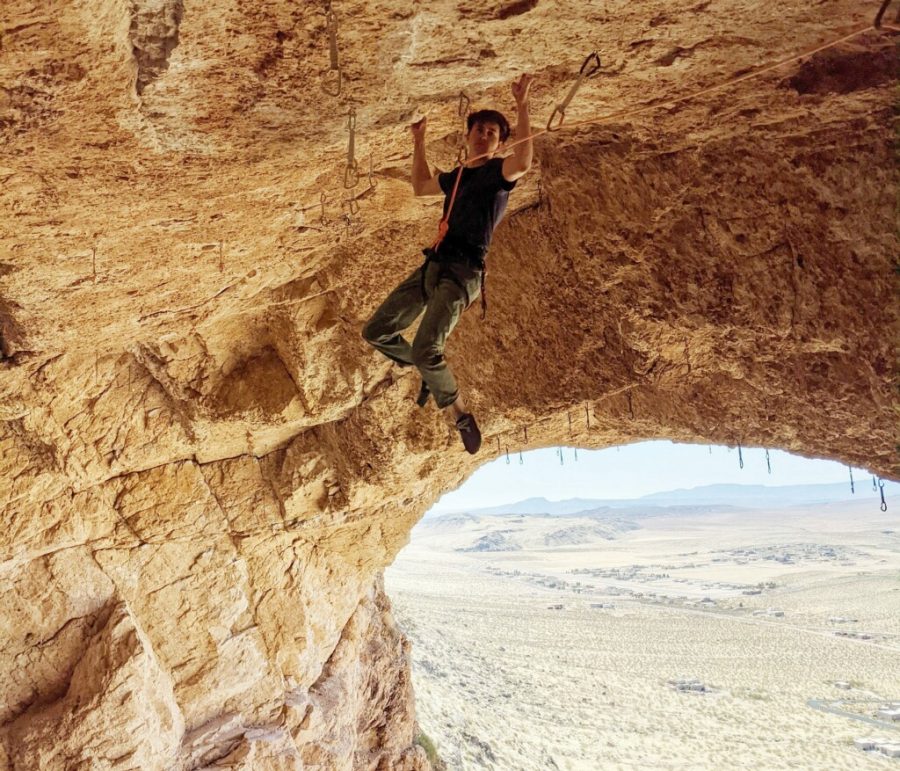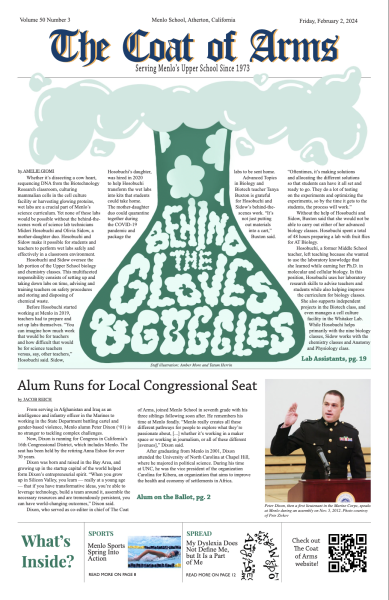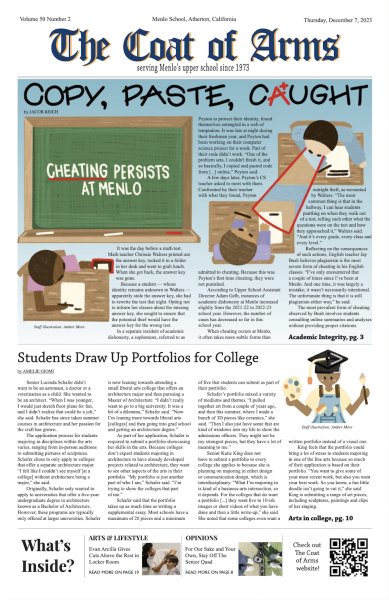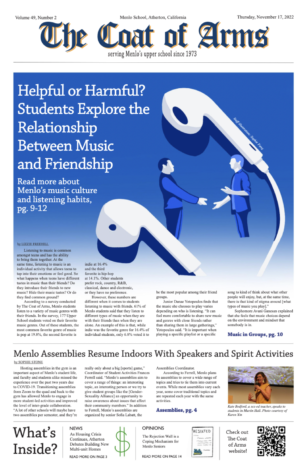Sophomore Linus Hansen Rock Climbs Through the Pandemic
Hansen sport climbs, which involves a rope and harness and climbing anywhere from 50 to 200 feet above the ground. “It’s kind of like solving a problem. You’re working out where your hands and feet go, how you should be positioning and where you should be moving,” Hansen said. Photo courtesy of Linus Hansen.
May 8, 2021
2021 marks the first year that rock climbing will be an Olympic sport. In the last decade, rock climbing has surged in popularity, according to the Climbing Business Journal. Commercial climbing popularity grew at a rate of 11.8% in 2018. However, while many Americans discover rock climbing for the first time, sophomore Linus Hansen has had a passion for climbing since age 11. The COVID-19 pandemic provided him with the opportunity to pursue his passion for rock climbing by working with the Momentum Climbing Team in Salt Lake City, Utah.
Hansen first discovered rock climbing in New York City, where he lived prior to moving to the Bay Area in 2019. “I was pretty much instantly hooked. I was going [to the climbing gym] constantly,” Hansen said.
Originally Hansen climbed mostly indoors. “I would go to the same gym and just climb on a bunch of boulders,” Hansen said.
Hansen recognizes that climbing in a gym may seem less conventional. “[When most think about climbing], they think about climbing outdoors,” Hansen said. Once Hansen discovered climbing outdoors, he began climbing in Central Park. Moving to California at age 14 gave Hansen even more opportunities to climb outdoors because of the proximity to Yosemite and other climbing locations in the Sierra Mountains. “I started to get much more into the outdoor climbing scene when I moved out to California,” Hansen said.
For half of the year, Linus trains in bouldering. Bouldering is a type of climbing that doesn’t require a rope or harness because climbers only reach up to 12 to 15 feet. “It’s kind of like solving a problem. You’re working out where your hands and feet go, how you should be positioning, and where you should be moving,” Hansen said.
Hansen also sport climbs. The biggest difference between bouldering and sport climbing is the height one climbs. Sport climbing involves a rope and harness, and Hansen usually climbs anywhere from 50 to 200 feet. “It’s still a lot of sustained moves, but it’s much longer,” Hansen said.
When the pandemic began, Hansen wanted to make the most of distance learning. For him, this meant rock climbing in Utah, where members of his extended family live. “I was able to stay with [my family] and get integrated into the world there,” Hansen said.
To Hansen, Utah was the perfect place to progress both his indoor and outdoor climbing abilities. Hansen’s approach to climbing in Utah was to train indoors and then apply his abilities to outdoor climbing. “I think the category of climbers I’d best fall into is having an indoor mentality of trying to get better but then taking those skills and trying to push yourself outdoors,” Hansen said.
Hansen sees Salt Lake City as the new hub for rock climbing, specifically because Team USA’s climbing team is training in Salt Lake City for the 2021 Tokyo Olympics. “A really big climbing scene has developed there. That’s really important because the gyms are really high quality,” Hansen said.
However, the majority of the climbing he did in Utah was outdoors. Hansen was climbing in areas close to Salt Lake City, such as Little Cottonwood Canyon. However, distance learning also made it possible for him to travel farther. “Two and a half hours to four hours away from Salt Lake City, there are probably five or six world-class climbing areas,” Hansen said. “It’s great for weekend trips or after school.”
In Utah, Hansen practiced with the Momentum Climbing Team. According to the team’s website, they hope to grow and train future Olympians. While rock climbers do not compete as a team, Hansen was able to improve his skills with his teammates. “[The team] is a great place for people to come together and train,” Hansen said. After training, Hansen and his teammates individually go on to compete at the regional and national levels.
Living in Utah allowed Hansen to dive into the world of rock climbing. “The nice thing about living in Salt Lake was that it was more of a community of people that did climbing,” Hansen said. “That’s not so much the case in California.”












